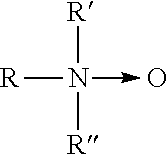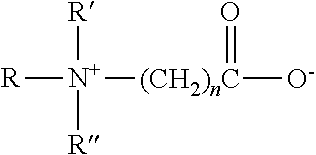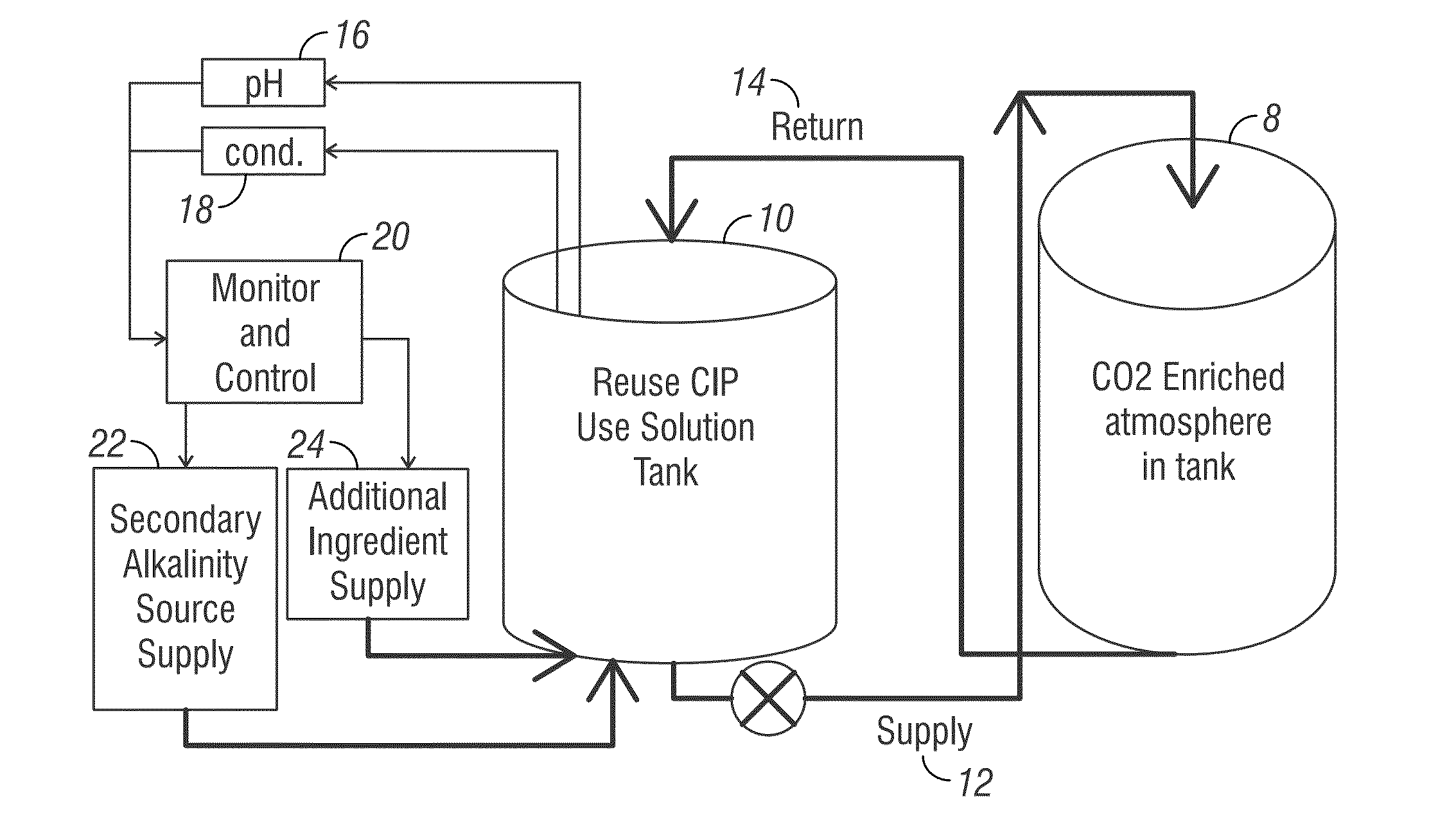Method of generating carbonate in situ in a use solution and of buffered alkaline cleaning under an enriched co2 atmosphere
- Summary
- Abstract
- Description
- Claims
- Application Information
AI Technical Summary
Benefits of technology
Problems solved by technology
Method used
Image
Examples
example 1
[0167]Two soiled CIP brewery fermentation tanks were selected. Pictures were taken of both soiled tanks before and after the cleaning (FIGS. 4A-D). A carbonate-based cleaning composition was prepared as provided in Table 1 in one of the soiled tank.
TABLE 1Cleaning Composition AIngredientConcentration (wt. %)Savinase ®0.2Stainzyme ®0.1Carezyme ®0.05TritonTM DF-12 Surfactant0.01Soda Ash1WaterBalance
The brewery fermentation tank was about 33% CO2 at 1 atm. The wash method was performed at a temperature between about 40° C. to about 45° C. The tank was sealed except for two, 2″ diameter vent holes. Cleaning Composition A was applied to the tank through a conventional spray ball nozzle in 20 second bursts, for three minutes. The cleaning method was performed for 30 minutes, which included recirculation of the use solution through the spray ball nozzle. The pH was measured using a standard handheld probe pH monitor after the wash cycle to evaluate the ending pH, which was alkaline.
[0168]T...
example 2
[0170]Four liters of Cleaning Composition A (Table 1) were added to a 20-liter pressure tank with a built-in pressure gauge. The pressure tank was enriched to about 75% CO2 at 1 atm. The tank was sealed and agitated. Similarly, four liters of a sodium hydroxide detergent were added to a 20-liter pressure tank with a built-in pressure gauge. The pressure tank was enriched to about 75% CO2 at 1 atm. Again, the tank was sealed and agitated.
[0171]When Cleaning Composition A was used, the reduction in pressure was about 2 psi as the sodium carbonate solution increased in concentration. When the sodium hydroxide detergent was used, the pressure was immediately lower and reduced by about 6 psi. The compared change in pressure is displayed in FIG. 5.
[0172]The NaOH detergent consumed about twice as much CO2. This resulted in the dramatic reduction in pressure and in a neutral to mildly acidic pH. The substantial addition of more NaOH is necessitated by the caustic detergent because the pH lo...
PUM
 Login to View More
Login to View More Abstract
Description
Claims
Application Information
 Login to View More
Login to View More - R&D
- Intellectual Property
- Life Sciences
- Materials
- Tech Scout
- Unparalleled Data Quality
- Higher Quality Content
- 60% Fewer Hallucinations
Browse by: Latest US Patents, China's latest patents, Technical Efficacy Thesaurus, Application Domain, Technology Topic, Popular Technical Reports.
© 2025 PatSnap. All rights reserved.Legal|Privacy policy|Modern Slavery Act Transparency Statement|Sitemap|About US| Contact US: help@patsnap.com



